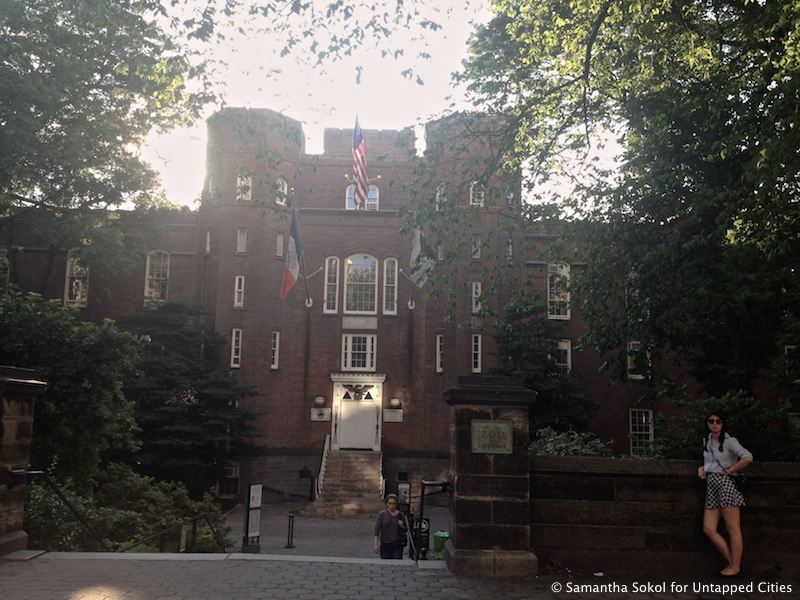
The Central Park Arsenal, at 64th Street and Fifth Avenue, is one of the two buildings (the other being the Blockhouse) left in the park that predate the park’s formation. Although its medieval architecture doesn’t quite match the park’s aesthetic, the 167-year-old Arsenal has survived multiple demolition attempts by providing a diverse array of functions, from its original usage as a state munitions facility, to the site of the Museum of Natural History, to its current role as home to the Department of Parks and Recreation and headquarters of the Central Park Zoo.
The medieval-style building, designed by architect Martin Thompson, was built between 1847 and 1851. In 1857, four years after the State designated the large plot of land under the building as Central Park, New York City officials bought the Arsenal for $275,000. After removing all the weapons, the city converted the structure to function as the park’s administrative building, which it did until 1914. Also in 1857, the 11th Police Precinct’s station took up residence in part of the building.
In 1859, what is now the Central Park Zoo began to form on the grounds around the Arsenal. Some of the animals were kept in cages in the basement where visitors could go and see them. Because of the horrendous stench and concern for the animals’ well being, the animals were moved to the area surrounding the Arsenal in 1871. Between 1869 and 1877, the Arsenal housed the newly-created American Museum of Natural History, including a studio where a paleontologist reconstructed dinosaur skeletons, until the museum relocated to its current home on Central Park West. The Municipal Weather Bureau also made use of the building between 1869 and 1918, when they kept their weather instruments on the roof of the Arsenal.
When Central Park was new to the city, park “aficionados” thought the building was hideous, and that it clashed with the park’s overall design. We heard that someone even hoped it would “accidentally” catch on fire! Since the park was so unpopular, a multitude of architects proposed plans to remodel the Arsenal, and the City accepted Jacob Wrey Mould’s interior design in the 1870s. The Arsenal dodged another wrecking ball in 1916 when the Department of Parks and Recreation, after having worked out of that building for several years, wanted to demolish it. The Parks department figured the police precinct and the Municipal Weather Bureau could move to other buildings in Central Park — we think either the Belvedere Castle or the building that is now Tavern on the Green.
In 1922, after the New York Times reported that the Arsenal was close to ruins, the City spent $75,000 on a renovation that took two years. Twelve years later, the Arsenal underwent a second renovation and became the official, citywide Parks department.
Currently, in addition to housing the New York City Department of Parks and Recreation, the Arsenal also houses the Arsenal Gallery, the City Parks Foundation, the Historic House Trust, and the New York Wildlife Conservation Society. More importantly, after being named an Official New York City Landmark in 1967, the Arsenal no longer needs to evade demolition attempts.
For more Untapped Central Park history, check out the Sheepfold, (now Tavern on the Green) or the Top 10 Secrets of Central Park.





